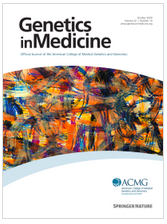 Newborn screening for SMA in 364,000 newborns conducted in Taiwan between November 2014 and December 2019 identified 21 infants with SMA (an incidence of 1 / 17,000) including:
Newborn screening for SMA in 364,000 newborns conducted in Taiwan between November 2014 and December 2019 identified 21 infants with SMA (an incidence of 1 / 17,000) including:
- 43% with two copies of the SMN2 gene
- 29% three copies of SMN2
- 29% four copies of SMN2
- 70% developed type I SMA
Monitoring the onset of symptoms
In response to newborn screening, the age of onset of symptoms has been reported:
- 8 infants with 2 copies of SMN2 showed the first symptoms before the age of one month, among them, 5 were already symptomatic at birth,
- 5 in the 6 infants with 3 copies of SMN2 became symptomatic before the age of one year,
- and only 1 in the 4 infants with 4 copies of SMN2 showed symptoms at 37 months.
Predict the onset of symptoms and response to treatment
By evaluating the amplitude of CMAP (compound muscle action potential) of the cubital (or ulnar) nerve in 12 of the infants, 6 treated with nusinersen and 6 untreated, the Taiwanese team showed:
- a low initial amplitude of CMAP, and more particularly in infants with 2 copies of SMN2,
- a rapid decrease in the amplitude of CMAP at the very beginning of the onset of clinical signs for infants with type I SMA with 2 or 3 copies of the SMN2 gene,
- a rapid increase in the amplitude of CMAP once treatment is initiated.
The authors suggest that assessment of the amplitude of CMAP would allow early detection of disease onset in infants still presymptomatic and predict a better response to nusinersen.
